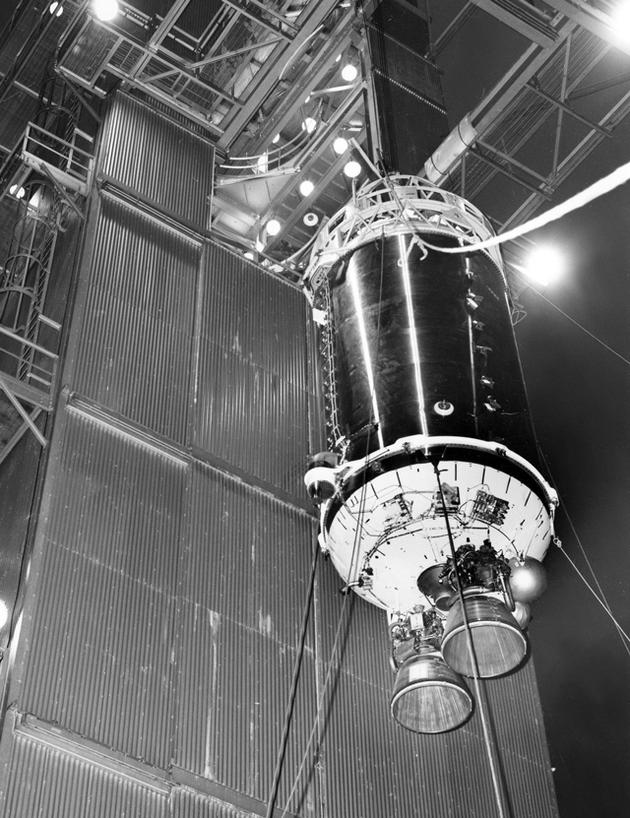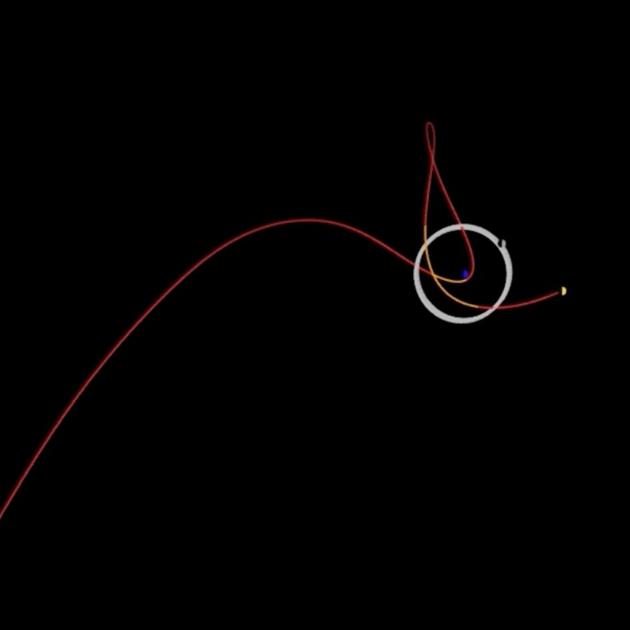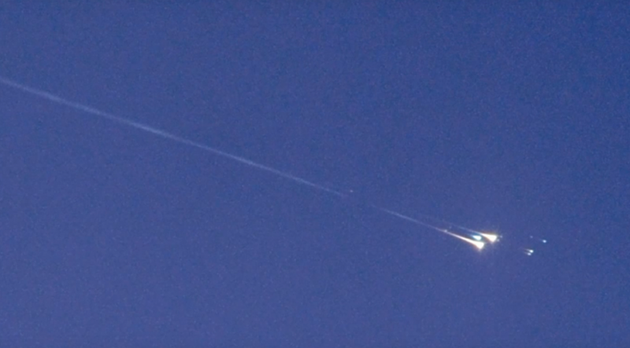According to media reports, scientists discovered a mysterious object in September this year. Now this mysterious object, code named “2020 so”, has become the new “mini moon” of the earth.
Based on data collected by NASA’s infrared telescope at Mount monakeya, Hawaii, and orbital analysis conducted by the near earth object Research Center (cneos) of the Jet Propulsion Laboratory (JPL), NASA confirmed on December 2 that the object was a 1960s rocket, which was launched more than 50 years ago from the surveyors 2 lunar mission.

This old 1964 photo shows the last stage of the Centaur that will dock with the cosmos rocket. Two years later, a similar Centaur rocket was used for the launch of the surveyor 2 spacecraft. The rocket, now known as 2020 so, is now a new temporary Mini moon for earth.
On September 17, 2020, scientists first noticed the object as it was flying near the earth. The orbit model quickly shows that the low velocity and trajectory of 2020 so are somewhat abnormal. The orbital model also predicts that the earth will capture 2020 so briefly, making it a new mini moon. On November 8, the earth captured this unusual object. On December 1, 2020 so arrived near the earth. Combined with the analysis of its trajectory in the previous three months, NASA finally confirmed that 2020 so is a relic of the early space age: a centaur final stage rocket thruster.
In 1966, the rocket took the Explorer-2 spacecraft to the moon. Unfortunately, surveyor2 failed to land on the moon successfully and the mission failed.
Scientists expect the missing rocket to leave earth in March 2021.

The figure shows the trajectory of 2020 so when it is captured by gravity on November 8, 2020. The temporary “mini moon” will leave earth in March 2021.
According to NASA’s explanation, the reason why 2020 so deviates from its original orbit seems to be caused by small but continuous pressure from sunlight. “The pressure exerted by sunlight, though small, is continuous, and its effect on hollow objects is much greater than that on solid objects. A used rocket is actually like a hollow tube with a large surface area but low density, so it will be more easily affected by solar radiation and pushed away from its original orbit. ” NASA explained.
Very close to the earth’s position on March 2020

In September, astronomers observed the object for the first time using the 1.8-meter pan-stars1 telescope in hellekala, Hawaii, and named it “2020 so.”. At first, in JPL’s small object data, 2020 so was classified as an Apollo asteroid.
However, further observations soon show that 2020 so has some characteristics that make it different from ordinary asteroids. According to NASA / JPL calculations, the object passed the moon at 1880 miles per hour or 0.84 kilometers per second. That’s too slow for asteroids.
The calculation also shows that the orbit period of this “low-speed asteroid” around the sun is 1.06 years, that is, 387 days. Relatively low speeds, combined with earth like orbits, suggest that 2020 so may be a man-made object from earth.
Paul chodas, director of the center for near earth object research, first suggested that the object might be the rocket propulsion of surveyor 2. On September 20, 1966, surveyor2 was launched from Cape Kennedy, Florida, on board the cosmos lv-3c centaur-d carrier rocket. The robot spacecraft is the second lunar lander in the U.S. unmanned lunar exploration project “Surveyor program.”.
Three days later, the rocket failed to correct and one engine failed to ignite, resulting in instability of spacecraft motion and loss of contact with ground control. Finally, surveyor 2 crashed near the Copernican pit.

Back to this strange object called 2020 so. Astronomers note that the 2002 so is about 6 to 14 meters in size, about the size of the cosmos lv-3c centaur-d rocket, which is about 12 meters long.

2020 so was captured by the earth’s gravity on November 8, and is expected to leave the earth and orbit the sun again in March 2021. During its orbit around the earth, 2020 so will “draw” two large circles. The blue dot in the center represents the earth. The white circle is the orbit of the moon.
How could we lose a 12 meter rocket? Alice Goleman, a space archaeologist at Flinders University in Australia, said it was very easy to lose a rocket carrying a spacecraft before it was used.
2020 so is not the first mini moon captured by earth. Scientists have confirmed two mini moons. One is 2006 rh120, which will orbit the earth between 2006 and 2007; the other is 2020 CD3, which will orbit the earth between 2018 and 2020.
Of course, this is not the first time we have mistaken space junk for an asteroid. “Wt1190f” is another object mistaken for an asteroid. In October 2015, scientists discovered that wt1190f was approaching the earth. Its trajectory shows that wt1190f will enter the earth’s atmosphere over the Indian Ocean near Sri Lanka.

On November 13, 2015, when wt1190f was decomposed in the atmosphere, scientists analyzed it by spectroscopy. The analysis results tell us that the object is likely to be part of the spacecraft or abandoned rocket.

